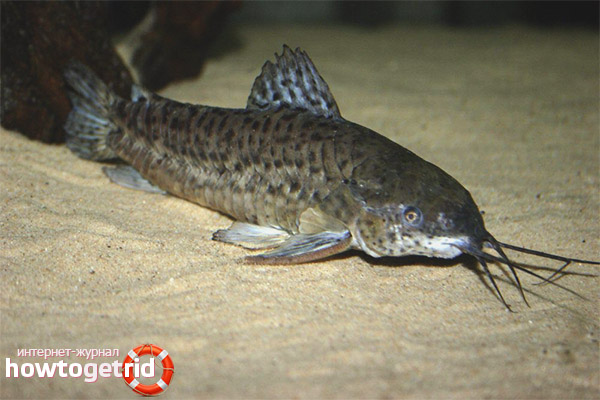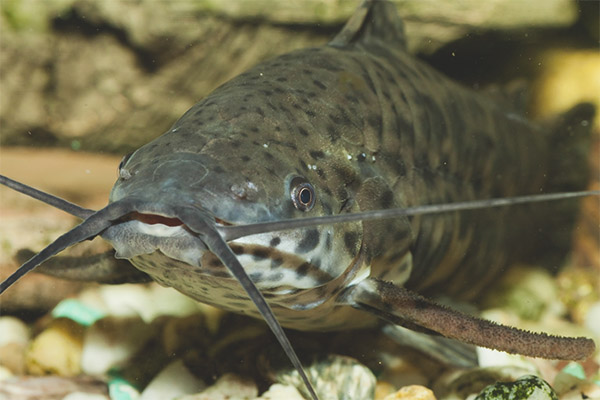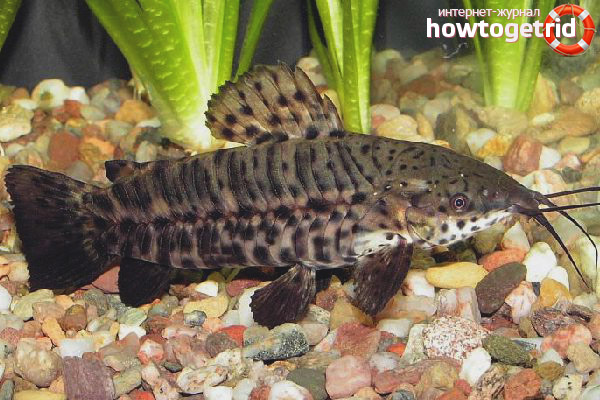The content of the article
Catfish are very popular among aquarists. They began to contain in aquariums for quite some time. A lot of fans of these interesting fish today. It cannot be said that catfish are the most beautiful among all aquarium fish. But among them there is one very attractive fish - catfish tarakatum.
Takakatuma is also called hoplopermum ordinary. In Latin, the name sounds like Hoplosternum thoracatum. Previously, these catfish were attributed to one species, until the studies were conducted more thoroughly. Dr. Roberto Reis studied the genus in 1997. It was he who concluded that the genus Hoplosternum must be divided. In place of the name Hoplosternum thoracatum came Megalechis thoracata. Despite this, in Russia, representatives of the species in the old manner are called catfish tarakatum.
Description
These fishes have brown color of a light shade. There are dark spots all over the body as well as on the fins. They appear in the process of growth of the fish and remain in adults.Young fish differ from older ones in that with age the color becomes darker. It is noteworthy that with the beginning of spawning, the male's abdomen becomes bluish, while in the rest of the period it is painted white. At the same time, in females, the color of the abdomen remains white constantly. These catfish with the right content can live for 5 years and longer.
Sex differences
Habitat in nature
The natural habitat of the Tarakatum catfish is the Amazon. Basically, they live in its northern part. Individuals were also found in Florida and on the island of Trinidad. This is due to the fact that some aquarists just released them to freedom, where the fish and bred.
Content
Representatives of this species prefer to live in warm waters. Therefore, it is recommended to maintain the temperature in the range of 25-28 degrees.There are no special requirements for other water parameters. This is due to the fact that in nature, Taracatums are not only adapted to soft, but also to hard water. The pH level may be different too. In addition, catfish tarakatum can live in water with different salt content.
These fish intestines are arranged in a special way. Because of this, they are able to breathe air on the surface of the water. Sometimes the fish rise to the surface to inhale. Before jumping, the catfish accelerates strongly. This should be considered when aquarium content. To prevent the fish from jumping out, the aquarium should not be left open. But at the same time, this means that if only these fish live in the aquarium, there is no need for a compressor and oxygen.
With the maintenance of these catfish it is important to provide them with space. The bottom area should be as large as possible, and the aquarium should hold from 100 liters of water. Fish can grow to considerable size. Adult representatives of the species in length reach 13-15 cm. In nature, the cat Tarakatum lives in large flocks. Sometimes one pack has several thousand individuals. It is not recommended to keep this species one by one. You need to plant at least 5-6 individuals.It is important that the male with such a flock be the only one. If there are several of them, this will lead to a constant struggle for dominance. A stronger representative can kill others during the spawning period.
It is also important to keep in mind that the fish are quite large, and they will eat a lot of food. After eating in the water there is a lot of waste. Water should be replaced every week (fifth part). It is also very important to provide water filtration.
Feeding
Since these catfish are quite large, they eat a lot of food. Today there are a lot of special feeds on sale that are designed specifically for catfish. Tarakatumu such food is fine. For a change, it is sometimes recommended to give them live food as well. To provide somik protein intake, you can feed it with worms and bloodworms.
Compatibility
Som tarakatum although it is quite large in size, it can peacefully coexist with many species of fish. Almost constantly they are in the lower layer of the aquarium. With other catfishes this species gets along quite calmly.
Breeding

These catfish breed in a very unusual way, which is very different from the process of breeding catfish of other species. On the surface of the water male builds a nest of foam. Tarakatum can build it for several days, carefully collecting pieces of vegetation. The result is a very large nest. In height, it is about 3 cm. The area of such a nest can occupy a third of the surface of the aquarium water. When a fish builds such a nest in nature, the material for it is large leaves. In the aquarium, you can put a flat piece of foam, under which will be located nest. The material for the nest are bubbles. Catfish releases them to hold plants together. They are covered on top with mucus, so that a few days will not burst.
As soon as the nest is built, the catfish pursues the female, which will float with him to the built nest. She lays about 10 eggs in her fins, then shifts them into the nest and floats away. After this, the male swims immediately. It is located up the abdomen and inseminates the eggs. From the gills, it releases several bubbles that fix the eggs. This process is repeated until the catfish postpone all caviar.Eggs can be very much. One female lays 500-1000 pieces. When the process is complete, the female can be deposited in another container. If there are still females in the spawning area ready to lay eggs, the spawning may repeat. The male stays near the nest and protects it very fiercely. He will attack absolutely everything that will come closer.
During this period, the male can not feed. He will not eat while protecting the nest. If the nest begins to partially collapse, it will add foam. He will return the fallen eggs back. But if the eggs fall to the bottom, they can hatch there as well.
She'll be in about 4 days. The temperature should be 27 degrees. After that, the male is rejected. A hungry catfish can eat it. The larva after a day or a little more floats up and swims to the bottom. After a day you can give the fry small food. They grow quickly, in two months in length they will reach 3-4 cm. After that they can be fed with adult food. Fry can grow to 300 at a time. Therefore, you should stock up with containers in advance in order to sort them by size. These fish are in great demand, so there should be no problems with what to do with the grown fry, which turned out so much.If an aquarist is faced with the problem of marketing fry, then he can be congratulated - the breeding process was a success. He raised beautiful interesting fish.
Video: aquarium fish catfish Tarakatum












To send